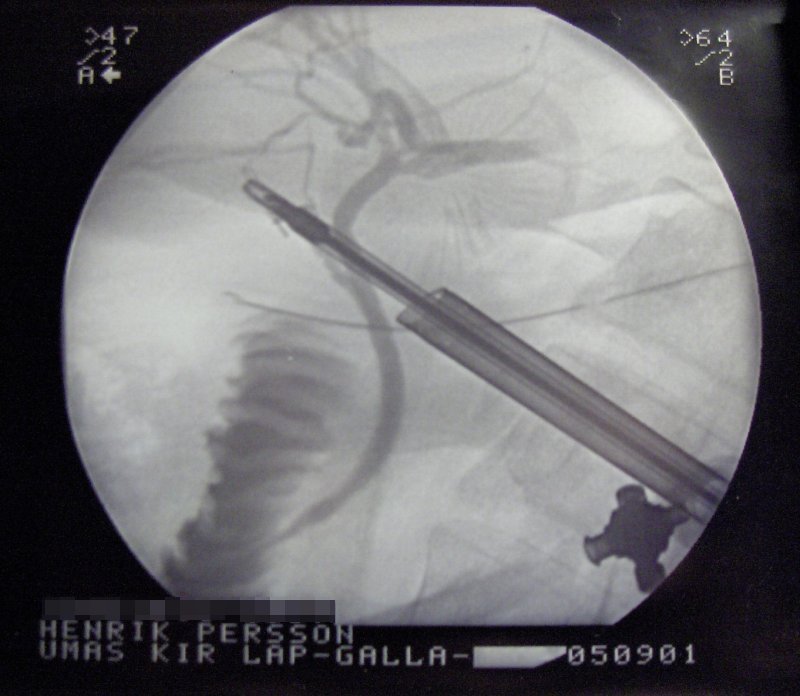Chronic cholecystitis surgery: Difference between revisions
Kiran Singh (talk | contribs) |
|||
| Line 22: | Line 22: | ||
[[Category:General surgery]] | [[Category:General surgery]] | ||
[[Category:Emergency medicine]] | [[Category:Emergency medicine]] | ||
[[Category:Disease]] | [[Category:Disease]] | ||
{{WikiDoc Help Menu}} | {{WikiDoc Help Menu}} | ||
{{WikiDoc Sources}} | {{WikiDoc Sources}} | ||
Revision as of 19:18, 2 June 2015
Editor-In-Chief: C. Michael Gibson, M.S., M.D. [1]
|
Chronic cholecystitis Microchapters |
|
Diagnosis |
|---|
|
Treatment |
|
Case Studies |
|
Chronic cholecystitis surgery On the Web |
|
American Roentgen Ray Society Images of Chronic cholecystitis surgery |
|
Risk calculators and risk factors for Chronic cholecystitis surgery |
Surgery

For most patients, in most centers, the definitive treatment is surgical removal of the gallbladder. Supportive measures are instituted in the meantime to prepare the patient for surgery. These measures include fluid resuscitation and antibiotics. Antibiotic regimens usually consist of a broad spectrum cephalosporin such as ceftriaxone and an antibacterial with good cover against anaerobic bacteria, such as metronidazole.
Gallbladder removal, cholecystectomy, can be accomplished via open surgery or a laparoscopic procedure. Laparoscopic procedures can have less morbidity and a shorter recovery stay. Open procedures are usually done if complications have developed or the patient has had prior surgery to the area, making laparoscopic surgery technically difficult. A laparoscopic procedure may also be 'converted' to an open procedure during the operation if the surgeon feels that further attempts at laparoscopic removal might harm the patient. Open procedure may also be done if the surgeon does not know how to perform a laparoscopic cholesystectomy.
In cases of severe inflammation, shock, or if the patient has a higher risk for general anesthesia (required for cholecystectomy), the managing physician may elect to have an interventional radiologist insert a percutaneous drainage catheter into the gallbladder ('percutaneous cholecystostomy tube') and treat the patient with antibiotics until the acute inflammation resolves. The patient may later warrant cholecystectomy if the condition doesn't improve.